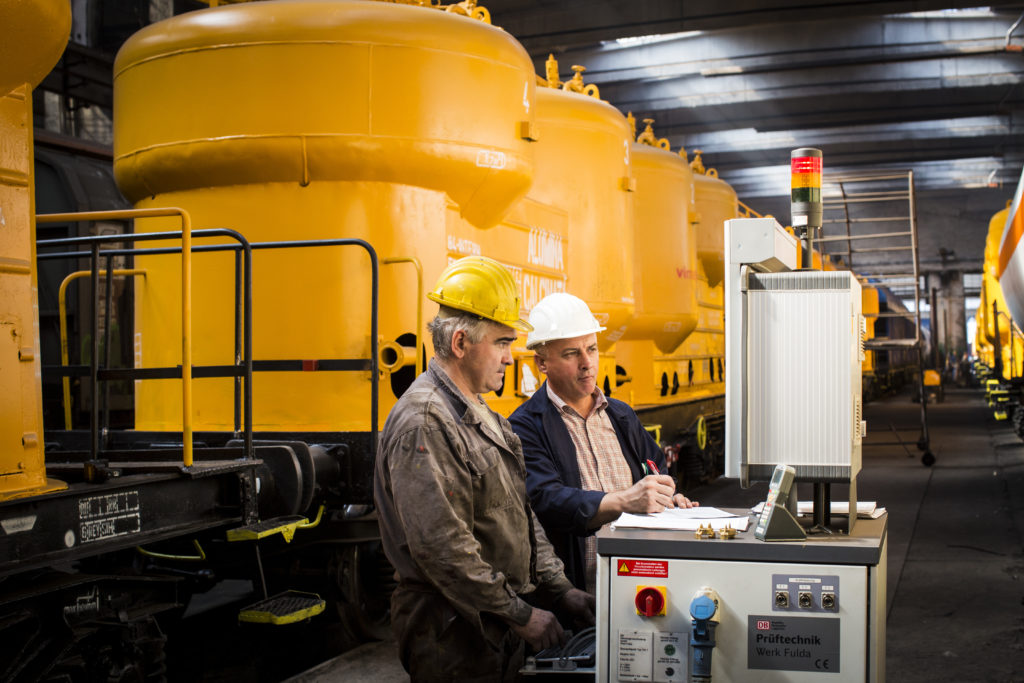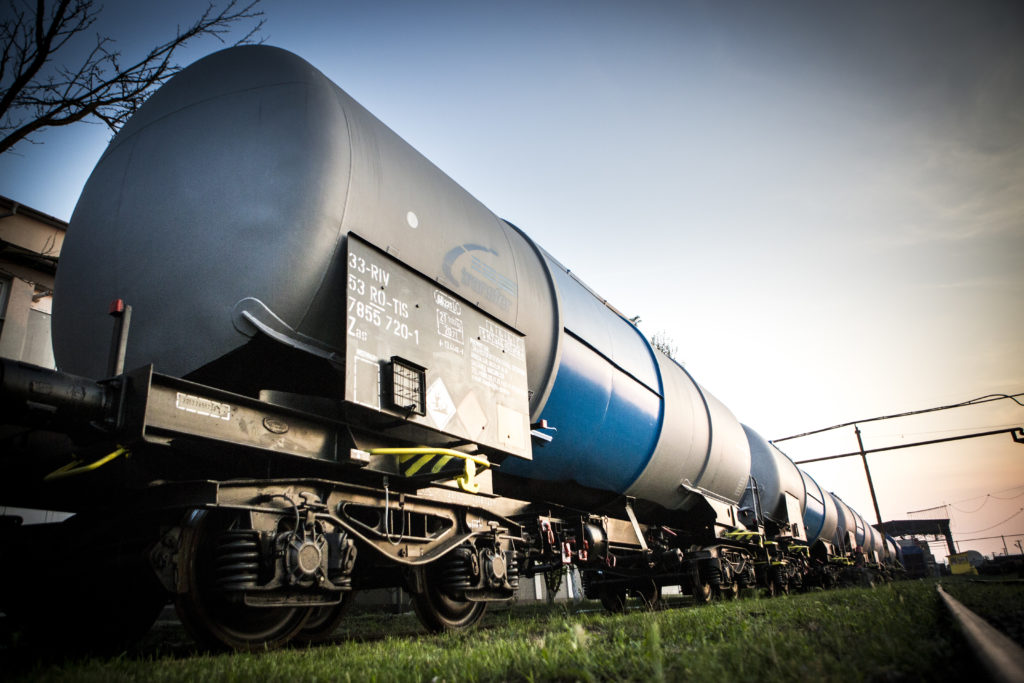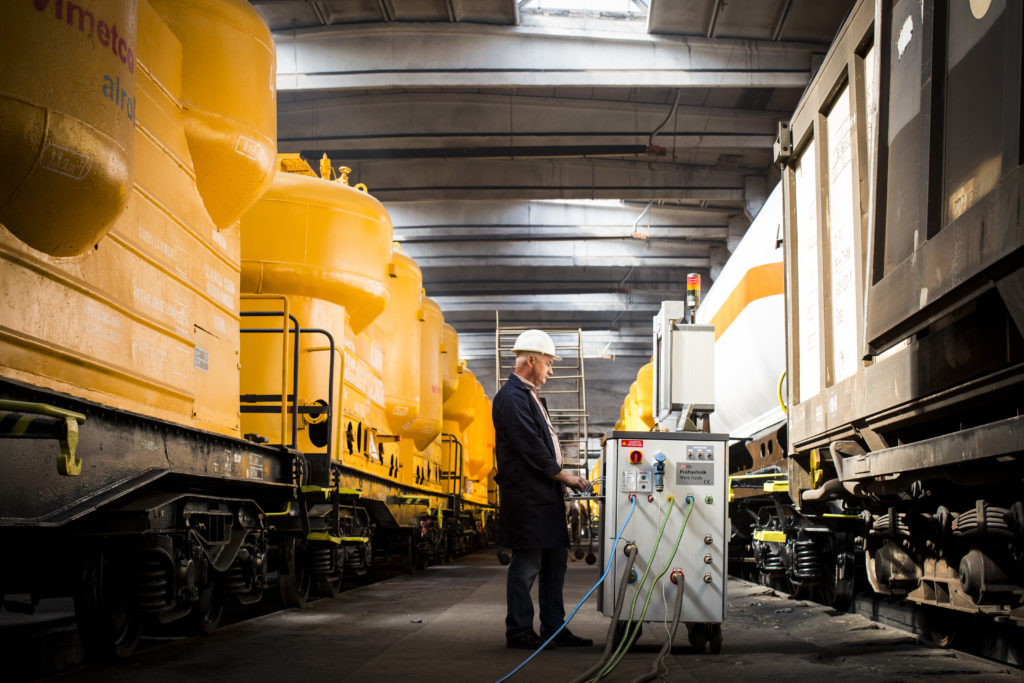REVA Simeria celebrates 150 years. The message of Gruia Stoica, president of GRAMPET Group
REVA Simeria, part of the GRAMPET Group, celebrated 150 years of existence on Thursday when it presented the modern freight wagons it produces, including four prototypes. “The star” is the 4-axle tank car, Zacs type, with a total capacity of 85 cubic meters.




The year 2019 has a double significance. In addition to the anniversary of REVA Simeria, this year also marks 20 years since the establishment of GRAMPET Group – Romanian Railway Group.
“At that time, we had a single transport license and a very ambitious dream to one day link Europe with Asia, from the Atlantic to the Pacific. REVA Simeria was the second company that joined the Group through the privatization we won in 2001. It was a strategic decision and a personal bet that we can carry on the Romanian tradition in the rolling stock repair industry”, said Gruia Soica, the president of the GRAMPET Group.
Currently, GRAMPET Group is the first multinational company with Romanian capital and the largest railway group and private logistics operator in Central and South-East Europe. “We are also the first European company to join the Trans-Caspian International Transport Route, part of the New Silk Road. At the same time, at the age of 150, REVA Simeria became the symbol of tradition itself in the Romanian industry and an example of performance, being the first Romanian rolling stock repair company certified in several states of Europe. We are leaders for our partners who have been crediting us with confidence for over 20 years. We are champions because of our employees, to whom I thank for their dedication and perseverance with which they represent us every day. Together, we promote the Romanian spirit abroad and continue to write history in the railway transport industry”, added Gruia Stoica
A turbulent history for REVA Simeria
The history of the rolling stock company from Simeria starts with the beginning of the works on the railway section Arad-Simeria-Alba Iulia when the authorities are looking for the most efficient location of the rolling stock repair workshops. The first option of the authorities was the county residence, Deva, but the local authorities categorically refused considering that a wagon repair shop and an industrial colony would affect the peace and cleanliness of the city.
Under such conditions, the railway manufacturers decided to place them on the empty land located on the outskirts of the villages Saulești and Simeria Veche. Between 1867-1868 the Railway station, The Locomotive Depot, The Railway Station Warehouse and the street Colonia de Jos (present-day Aurel Vlaicu street) were built. Also in 1868, the construction of the Simeria locomotives and wagons repair hall. Although the construction was completed in 1870, we can consider that the “ground zero” of the workshops is the year 1869 when the repair works of rolling stock begin with just 20 workers.
After 130 years, while it was part of the patrimony of two different states, the Austro-Hungarian Empire and Romania and it “survived” both world wars, SC REVA SA joins the Grampet Group, which after a public auction comes to hold 89,56% of the company’s shares. Starting with only 20 employees, the company has reached 578 employees at the moment, and our clients are large owners of railway parks in Romania, France and Germany.
Wagons manufactured at REVA Simeria
The main activity of REVA SA is the revision and repair of freight wagons, but to keep up with the demands of the markets on which it operates, the branch of modernization and construction of rolling stock has been developed. Here are some examples of construction and modernization of wagons made at Simeria:
- The 4-axle tank wagon, Zacs type, with a total capacity of 85 mc, is intended for rail transport of light petroleum products, class 3 RID (gasoline, diesel, mineral oil), as well as other products corresponding to tank code L4 BH. The wagon has a maximum speed of movement of 120 km/hour (empty) and 100 km/hour loaded, a maximum axle load of 20 tons and is approved for international traffic;
- The 60 m3 cistern wagon, equipped with heating installation, for which the thermal insulation was executed to limit heat loss during transport
- The Laadffoos wagon for vehicle transport, constructed through the modification and modernization of the wagon pair type TD 452 into the wagon pair type TDT 852 on 8 axles. The modernization of this couple of wagons consists of equipping them with sliding side walls made of tarpaulin and with a fixed roof;
- Eaos series wagon, made by constructing a wagon with new chassis and new body and equipping with other reused components, all brought to the initial parameters of operation;
- The modification of wagon series Faccpps in a Uapps series wagon. This was achieved by transforming and reinforcing the chassis, modifying the unloading system, modifying and strengthening the body to have a greater capacity, manufacturing and installing the roof and the systems for loading and installing new accessories;
- The school car consists of two parts: a tank for liquid products and one for liquefied gas. On each side are mounted the safety equipment specific to the transported products; The wagon is used to carry out practical exercises for handling the equipment and to familiarize the students with them.

